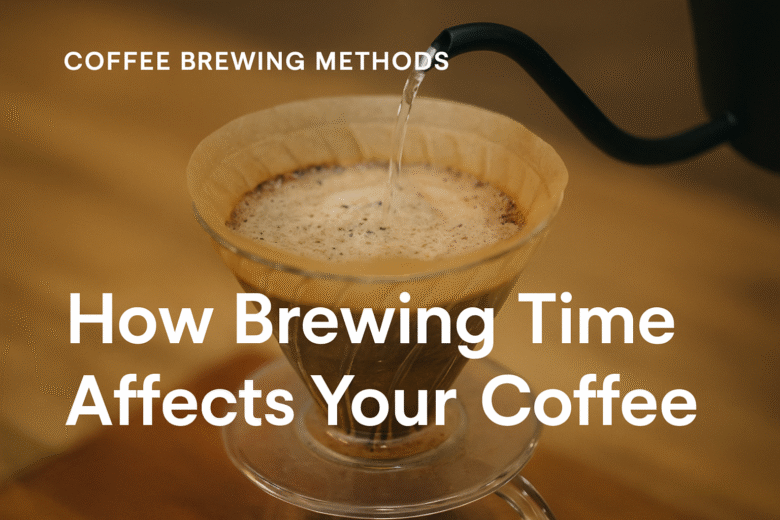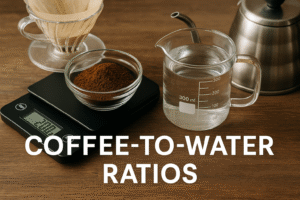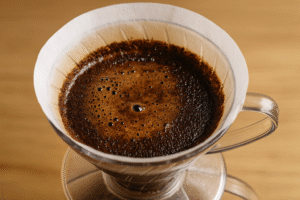Brewing time is one of the most overlooked factors in coffee preparation. You may have the perfect beans, the right grind size, and filtered water—but if you get the timing wrong, your cup can swing from sour and weak to bitter and overwhelming.
Understanding how long your coffee should brew depending on the method you’re using is critical for achieving a balanced, flavorful result. It’s not just about waiting—it’s about controlling extraction.
In this guide, you’ll learn how brewing time works, ideal timings for different methods, signs you’re over- or under-extracting, and how to fix your brews through timing alone.
What Is Brewing Time, Really?
Brewing time is the total amount of time water is in contact with coffee grounds during extraction.
In immersion methods (like French press), the coffee steeps for a set time before filtering.
In percolation or drip methods (like pour-over or espresso), water passes through the grounds at a steady pace, and the timing depends on flow rate and grind size.
Each method has its sweet spot. Too little time? The water doesn’t extract enough flavor. Too much time? It pulls out undesirable bitter compounds.
The Science Behind Extraction Timing
Coffee is made up of different soluble compounds, which dissolve in water at different rates:
- Acids and fruity flavors dissolve first
- Sugars and sweetness come next
- Bitterness and dry notes come last
If your brew is too short, you only get the acids. Too long, and bitterness dominates. A properly timed brew gives a full spectrum of flavor.
Ideal Brew Times by Method
Here are recommended timing ranges for popular brewing methods:
1. French Press
Time: 4:00 minutes
- Coarse grind
- Full immersion
- Stir at 1:00 minute, plunge at 4:00
- Longer = bitterness; shorter = sour notes
2. Pour-Over (Hario V60, Kalita)
Time: 2:30 to 3:30 minutes
- Medium-fine grind
- Pour in pulses or continuous spiral
- Too fast = under-extracted; too slow = bitter
3. AeroPress
Time: 1:30 to 2:00 minutes
- Medium-fine grind
- Total time includes stirring and pressing
- Inverted method allows longer steeping
4. Espresso
Time: 25 to 30 seconds
- Fine grind
- 1:2 brew ratio (e.g., 18g in → 36g out)
- Too fast = thin and sour; too slow = dry and bitter
5. Moka Pot
Time: 3 to 5 minutes
- Medium-fine grind
- Time starts from when water begins boiling
- Watch for bubbling; remove from heat immediately
6. Cold Brew
Time: 12 to 18 hours
- Extra coarse grind
- Steep in fridge or room temp
- Shorter = lighter; longer = stronger and bolder
7. Drip Coffee Maker
Time: 5 to 7 minutes (varies by model)
- Medium grind
- Water must stay in contact long enough to extract sweetness
Signs You’re Brewing for Too Long or Too Short
Under-Extraction (Too Short)
- Sourness or high acidity
- Watery mouthfeel
- Lack of sweetness or depth
- Thin or tea-like coffee
Fix: Brew longer, use finer grind, or stir more evenly
Over-Extraction (Too Long)
- Dry, chalky bitterness
- Hollow, empty taste
- Astringent finish
- Harsh or metallic aftertaste
Fix: Brew shorter, use coarser grind, or reduce agitation
How to Control Brew Time Precisely
- Use a timer: Always time from the moment water touches coffee
- Control your pour: In pour-over, flow rate impacts time—practice slow, even pouring
- Use consistent grind size: Uneven grind leads to uneven extraction
- Watch total contact time: In immersion methods, time includes steeping only—not pressing
- Don’t let coffee sit after brewing: It continues to extract and can turn bitter
Adjusting Time Without Changing Other Variables
You don’t always need to change your recipe completely. You can make subtle timing adjustments:
- Shorten immersion by 15–30 seconds if your brew is too harsh
- Add a pre-infusion or blooming stage to improve evenness
- Pulse pour instead of continuous pour to slow the process
- Stir less (or more) to reduce or increase extraction
Timing + Temperature: A Powerful Duo
Brewing time works hand-in-hand with temperature. Lower temperature means slower extraction, so time needs to increase.
If you brew at 85°C instead of 95°C, you may need 15–30 seconds more for balance.
Conversely, hotter water extracts faster—so brew time may need to be slightly reduced.
Keep both in sync for best results.
Frequently Asked Questions (FAQs)
1. What happens if I don’t time my brew at all?
You lose consistency. Each cup may taste different, and you’ll never know what to fix.
2. Can brewing longer improve weak coffee?
Not always. It might just make it bitter. Try increasing the dose or using hotter water instead.
3. Why does my French press taste better at 5 minutes?
Taste is subjective—if you like it, go with it! Just be aware of over-extraction risks.
4. Do all pour-over drippers need the same brew time?
No. V60 is faster, Kalita is more stable. Adjust time slightly depending on dripper design.
5. Does cold brew get too strong if steeped too long?
Yes. After 18–20 hours, bitterness and woody flavors can develop. Keep it under 24 hours.
6. Can grind size fix timing problems?
Absolutely. Finer grind slows down brewing and increases extraction. Coarser speeds it up.
7. What’s more important—time or temperature?
Both. But if you can only control one, time is easier and just as effective for beginners.
Final Thoughts – Master the Clock, Master Your Cup
Brew time is your secret weapon. It’s how you transform raw ingredients into something balanced, bold, and beautiful.
It’s not just about waiting—it’s about precision. Paying attention to time lets you unlock the full potential of your beans.
With a timer, a steady hand, and a little practice, you’ll brew consistently great coffee every time. Because in the world of coffee, timing really is everything.

Marcio Luzardo is a coffee enthusiast and the voice behind Tudo Viraliza. With a passion for turning curiosity into practical knowledge, he shares easy-to-follow tips, guides, and insights to help readers enjoy better coffee every day. When he’s not writing, Marcio is exploring new brewing methods or diving into the rich stories that connect coffee to culture, lifestyle, and wellness.



